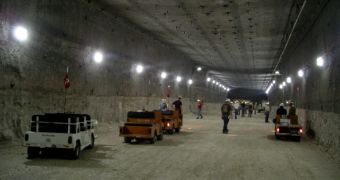The issue that involves the symmetry breaking physics field is among the most important concerns in the world of physics, as demonstrated by the recent winning of a Nobel prize, since it could provide a much better understanding of the way the universe was created a few seconds after the Big Bang, as well as how it evolved ever since and will continue to do so in the future. Basically, nowadays everything that surrounds us, up to the remotest of the points in space, is made out of matter. But it has not always been so.
The first seconds after the immense explosion at the beginning of the universe saw equally balanced amounts of matter and antimatter, annihilating each other. But in a couple of moments, matter prevailed, and the small percentage of remaining matter built the bodies in the outer space. The reasons for which that happened still elude scientists today, although they have been trying to shed light on the phenomenon for quite some time now. In this regard, people who are fascinated by devices like the LHC will be happy to salute the arrival of a new particle detector called the Enriched Xenon Observatory 200 (EXO-200).
Placed in the depths of an old salt mine within the Department of Energy's Waste Isolation Pilot Plant (WIPP) close to Carlsbad, New Mexico, the radiation detector will be the most sensitive one in the world, and it will monitor the behavior and decay of neutrinos (the particles that don't really interact with matter). Scientists believe that neutrinos are their own antimatter particles and, starting from there, they expect to draw further conclusions and results, such as the particles' mass. They rely on pure xenon, a noble gas further enriched by Russian weapon scientists.
The challenge ahead lies in observing neutrinoless beta decays at a rate that would allow for scientific certainty. The EXO-200 will not be alone in this endeavor of neutrino measurement and tracking, since more devices of this type, like Italy's Cryogenic Underground Observatory for Rare Events or the Germany-based Germanium Detector Array or the Cadmium-Zinc-Telluride 0-Neutrino Double Beta Research Apparatus provide a tough competition. There are also plans for a bigger detector than the EXO-200 to be built by the same team when proper space and funding are available.

 14 DAY TRIAL //
14 DAY TRIAL //